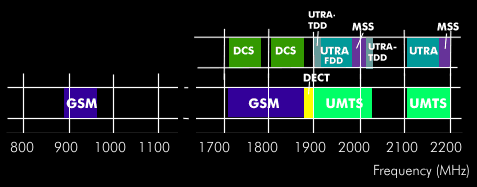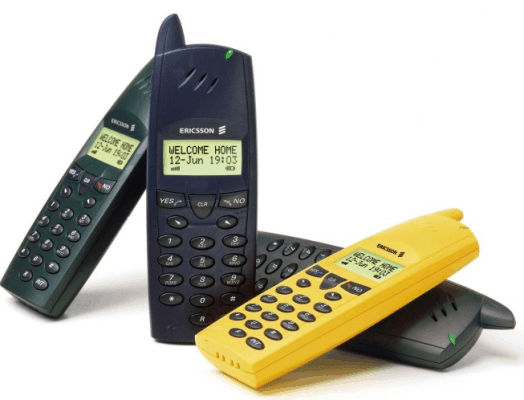digital enhanced cordless telecommunications (DECT)
Digital Enhanced Cordless Telecommunications (DECT) is a European standard for cordless telephony( CT) and was designed by the European Telecommunications Standards Institute( ETSI) in 1991 and officially adopted in 1992. DECT defines the air interface between the mobile handset, the portable part ( PP), and the base station, the fixed part( FP), supporting both voice transmission and data transmission at flexible transmission speeds.
DECT is characterized by high voice quality and eavesdropping security, by encryption, subscriber identification and identification of fixed part and mobile station, by access authorization and dynamic channel assignment, by high traffic density and uninterrupted channel change, by fast connection setup and flexible allocation ofdata rates, and by many other features.
The DECT standard
The DECT standard defines interfaces and system structures. Within the framework of the Common Interface( CI), access to public services has been defined with the Public Access Profile ( PAP), as has compatibility between terminals of different users with the Generic Access Profile( GAP), use as a Wireless Local Loop(WLL) in the access network with the Radio Local Loop Access Profile( RAP), and as corporate networks with the Corporate Access Profile( CAP). In addition, openD is an open-source API for voice and data transmissions.
The DECT standard defines a cellular mobile radio system for in-house communication for portable voice and data terminals for distances of up to 300 meters outdoors. The transmission frequency band is between 1.880 GHz and 1.900 GHz. The maximum transmission power from the base station and the handset is 250 mW. For telephone calls, this value averages out to 10 mW. DECT uses Gaussian Minimum Shift Keying( GMSK) as the modulation method, Time Division Multiple Access( TDMA) as the access method, and encryption is based on the Advanced Encryption Standard( AES) with 128 bits.
DECT variants
There is also upbanded DECT, which operates in the ISM band and, like Bluetooth and HomeRF, is used for wireless communication and WLANs.
Depending on the channel type, the DECT standard supports transmission rates of 32 kbit/s or 25.6 kbit/s. Channels can also be coupled to increase speed, enabling maximum data transmission rates of up to 1,152 kbit/s. In addition, a changing number of channels can also be assigned to an existing connection, whereby each channel can be specified in its transmission direction. DECT takes into account internetworking with the GSM network and with ISDN. For this purpose, there is the GSM Interworking Profile (GIP) access profile and the ISDN Access Interworking Profile( IAP). The IAP profile is used to handle certain ISDN service features such as caller ID, call waiting, three-party conferences and call forwarding.
DECT is intended to replace the existing CT2 radio telephone systems. Telecom specialists from European PTTs and manufacturers helped define the DECT standard. This also explains why this standard is geared more to the requirements of voice communication than to the needs of data communication.
DECT differs from GSM in having a high subscriber density in a relatively small area. With DECT, up to 100,000 subscribers per square kilometer can communicate. In addition, there are fundamental differences in the relative movement of subscribers. With DECT, the movement of the subscribers must not exceed 20 km/h, whereas in GSM networks, communication can still take place at speeds of 250 km/h.
Other DECT variants are DECT over IP( DECToIP), Cordless Advanced Technology - Internet and Quality( CAT-iq) and DECT Ultra Low Energy( DECT ULE) for smart homes.


